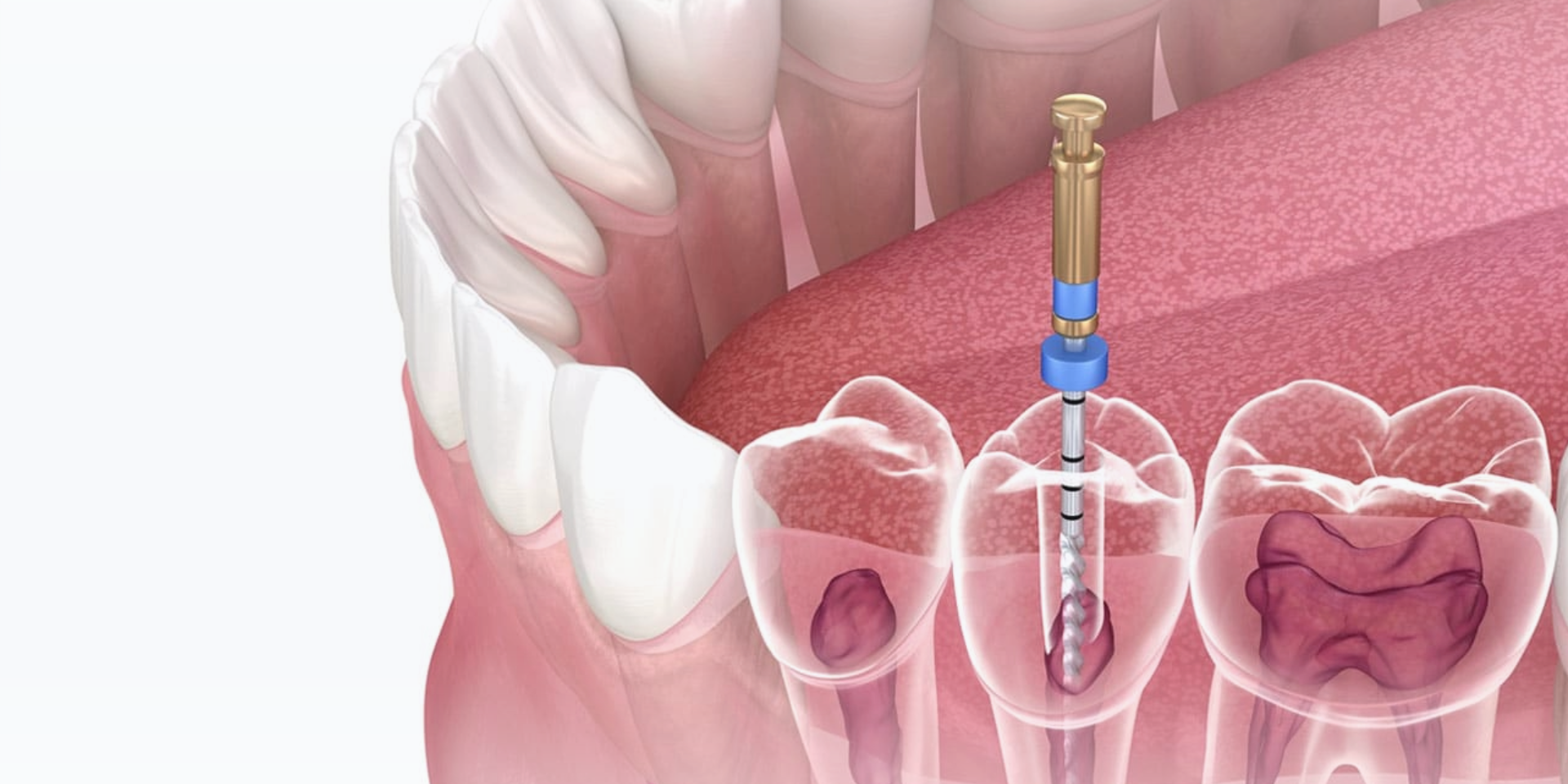What is root canal treatment?
Root canal treatment, also known as endodontic treatment, is a treatment of dental pulp that has become infected due to cavities, fractures or cracks. In this treatment, the tissues consisting of nerves, blood vessels and other cells in the inner part of the tooth are cleaned and the root canals are filled with suitable material and then finally need to be restored.
How is it made?
First of all, a good diagnosis is essential. The most appropriate treatment for the tooth is selected. Then the tooth is isolated from the oral environment and saliva, and the root canals are penetrated. The inflamed pulp tissue is removed, the root canals are enlarged, and the canals are washed out with strong medications. Then the surrounding tissues are filled with the most suitable filler material.
Will there be pain?
Anesthesia is applied during the procedure and pain is not felt. There may be mild pain for a day or two after the procedure, and this is supported by pain medication.
How much will it take?
The procedure may take one or two sessions depending on the degree of infection in the tooth. A week can be scheduled between sessions. During this period, the filling is applied, albeit temporarily. Sessions can last from 30 to 45 minutes on average.
What should we pay attention to next?
Molars and premolars that have undergone root canal treatment need to be protected with various restorations due to the loss of a significant amount of tooth tissue after entering the root canal system. Restorations such as ceramic coatings, zirconium, onlays for treated teeth are the methods we use the most. Although these restorations protect the tooth from fractures, they also prevent further leakage into the root canals.
As a result, a properly restored tooth after root canal treatment provides long-term success rates of almost 95%.
Root canal or implant?
Stopping treatment carries risks, including pain, infection, and the possibility of worsening a tooth infection rendering the tooth irreparable (often root canal treatment is not successful due to excessive loss of tooth structure) . If a major loss of tooth structure occurs, extraction may be the only option.
Studies comparing root canal treatment and implant treatment are noteworthy, both in initial treatment and in retreatment for failures of initial endodontic approaches. Endodontic treatment provides an important reflex to prevent patients from chewing poorly and damaging the temporomandibular joint.
Some patients with implants describe a dull, uncomfortable pain after the procedure, while those receiving endodontic treatment describe a “sensation” or “tenderness” in the area.
Other studies have shown that root canal patients report peak pain the day after treatment, while extraction and implantation patients report peak pain by the end of the week following surgery.
Similar Cases


